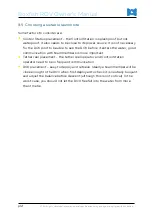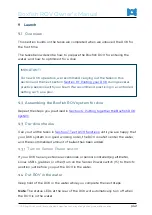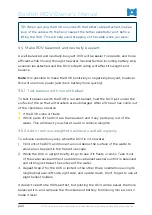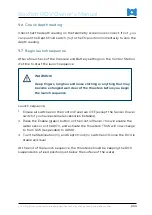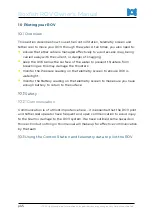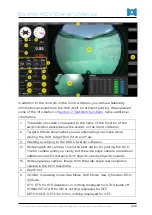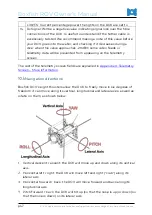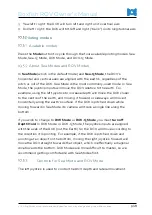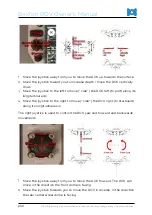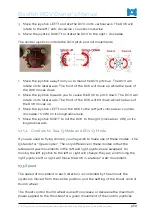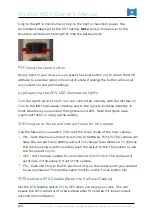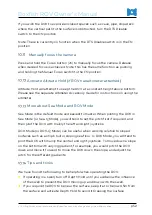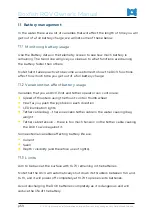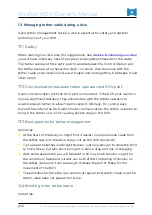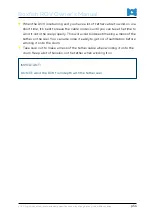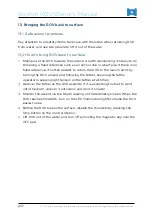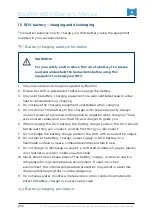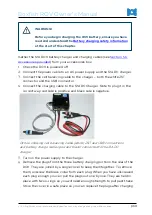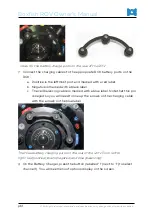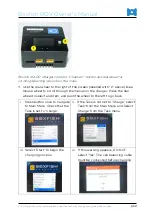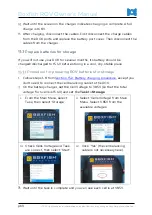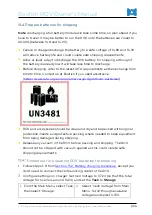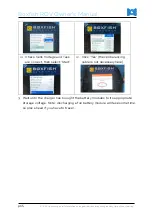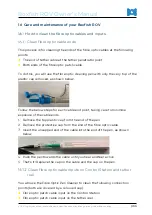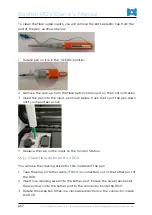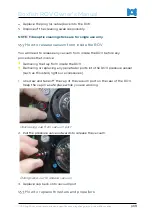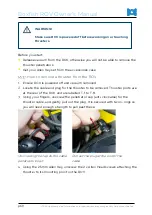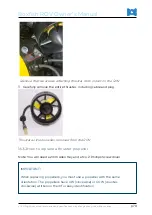
Boxfish ROV Owner’s Manual
p55
V1.3 All rights reserved. Information and specifications may change at any time without notice.
12
Managing tether cable during a dive
Good tether management during a dive is essential for safety and optimal
performance of your ROV.
Safety
When making your dive plan (for suggestions, see
Section 8: Planning your dive
)
you will have noted any risks of people or entanglement hazards in the water.
The tether cable and fibre optic patch cable between the Control Station and
the tether reel are a trip hazard on deck / on shore. Also take care with the
tether cable under tension and avoid fingers and limbs getting in between it and
other items.
Communication between tether operator and ROV pilot
Good communication with the ROV pilot is important: if the ROV pilot wants to
move a significant distance, they should work with the tether operator to
unwind enough tether to allow free movement. Similarly, for coming back
toward the surface the ROV pilot should communicate to the tether operator to
bring in the tether so it is not causing excess drag on the ROV.
Best practice for tether management
Some tips:
At the start of the dive you might find it easier to unspool some cable from
the tether reel onto the deck to pay out as the ROV descends.
Try to keep the tether under light tension: just long enough to allow the ROV
to move freely, but also short enough to reduce drag and risk of snagging.
With some experience you will be able to tell how much tension is right for
the conditions. Swell and current can both affect the feeling of tension on
the tether cable and it can be easy to mistake the pull of these for the
movement of the ROV.
The pilot should check the rear camera at regular intervals to make sure the
tether cable does not appear too loose.
Winding in the tether cable
Some tips:

